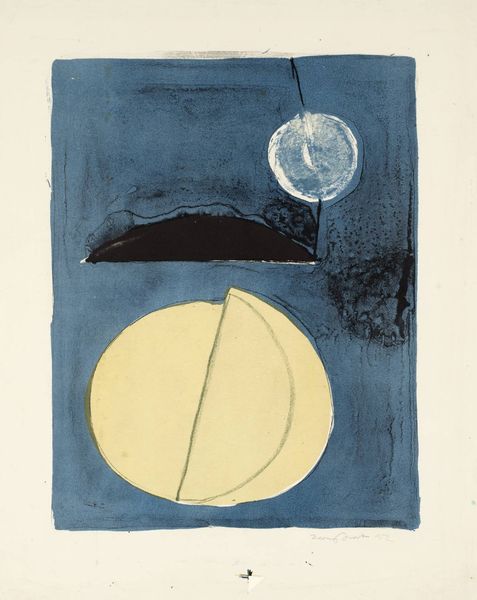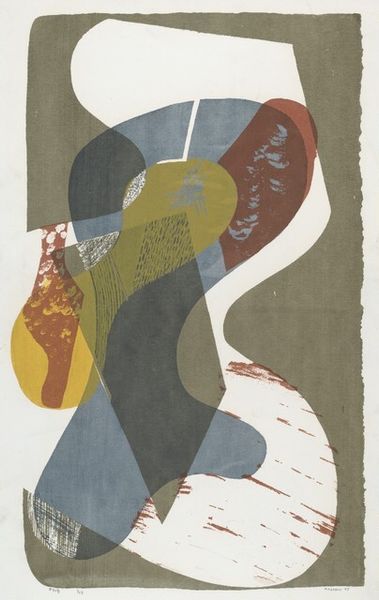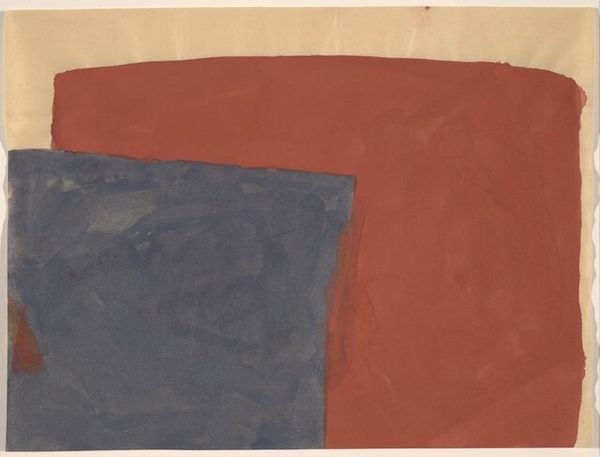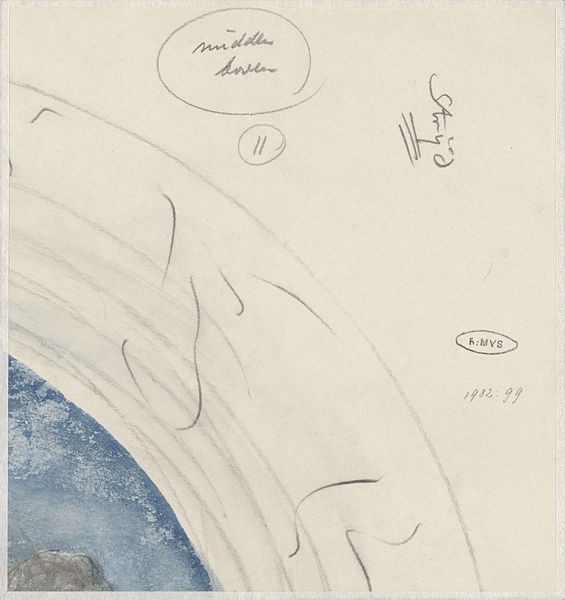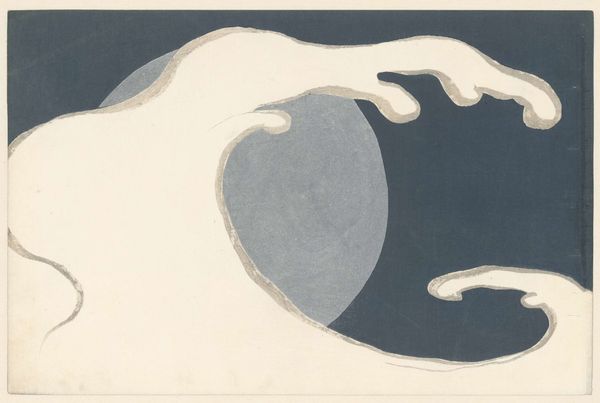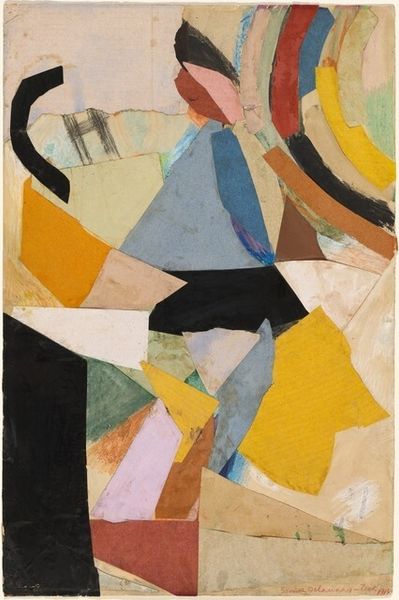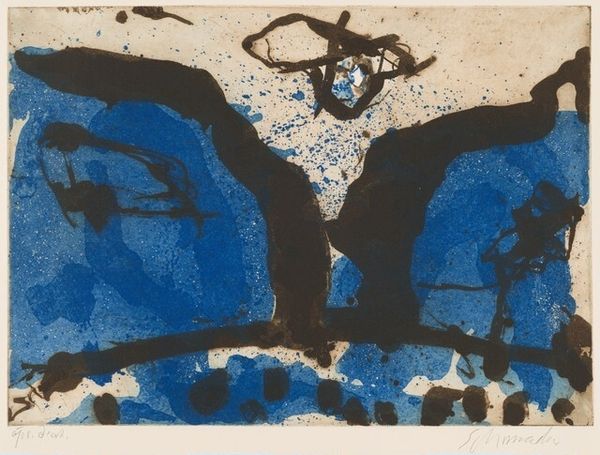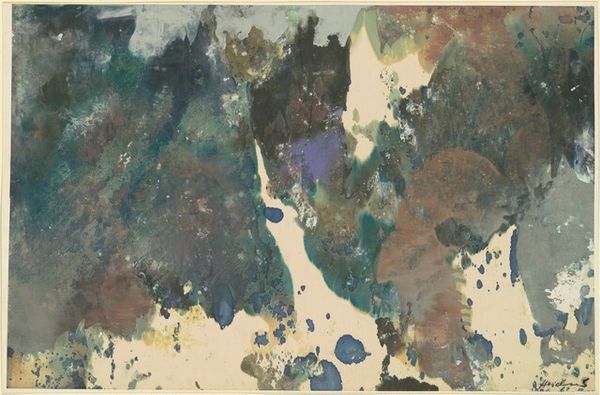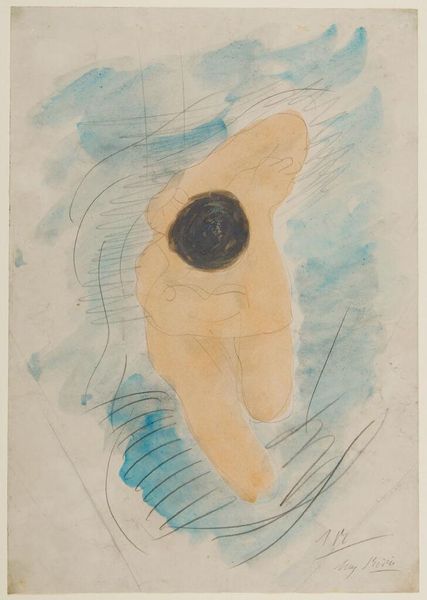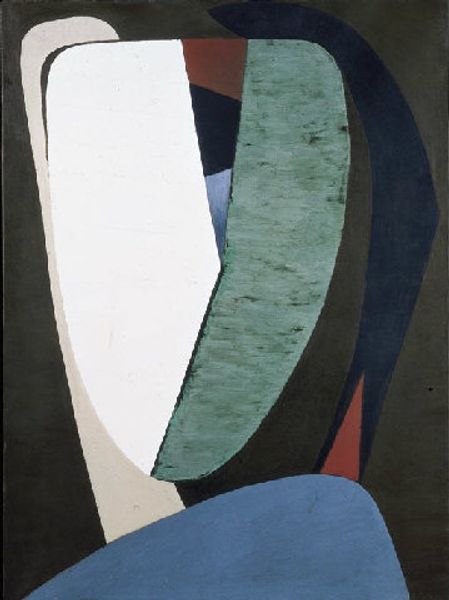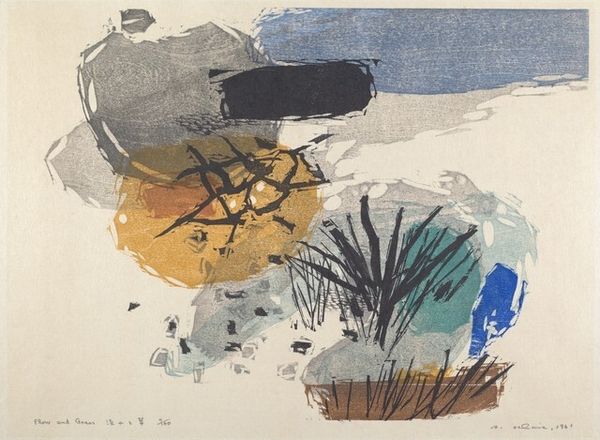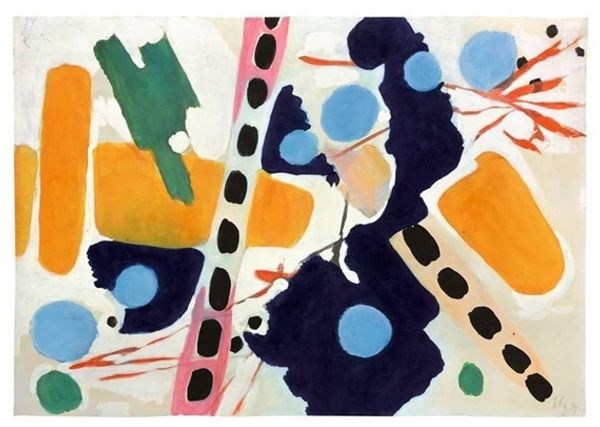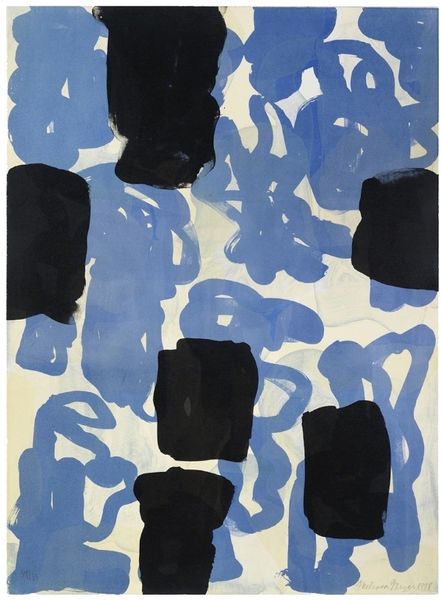
Copyright: Public domain Japan
Curator: Welcome. We’re standing before Koshiro Onchi’s "Poem No. 6: Image de la Mer," created in 1948 using watercolors. Onchi was a pivotal figure in the Sōsaku-hanga movement, emphasizing the artist's unique expression through self-carved and self-printed works. Editor: Well, my immediate reaction? Dreamlike. I feel like I'm looking through the eyes of someone half-asleep on a beach, watching the shapes shift with the tide. Are those supposed to be seashells? Curator: Possibly. The composition is striking; Onchi plays with these floating, organic forms. Given its creation shortly after the war, one can see how its apparent simplicity is misleading. Post-war artists grappled with immense social and personal traumas, turning inward. The abstract style might reflect the fragmented reality many experienced, especially concerning a cultural reimagining of Japanese identity following defeat. Editor: You know, the muted blues and tans make me think of weathered memories – fragments washed ashore, smooth and worn. There’s almost a quiet melancholy in its color palette, despite its playful composition. I keep coming back to this dark, shell-like blob on the right – it looks so ominous next to the softer shapes. Curator: It is definitely a powerful juxtaposition! And from an intersectional perspective, consider the gendered roles imposed during and after the war. Were these floating forms meant to represent something beyond purely aesthetic forms, maybe reflecting some anxieties about imposed foreign expectations? We also might explore this work through queer theory. If we view it through that lens, are these floating organic shapes metaphors for bodies, intimacy, relationships? Editor: Huh, now you mention it, the placement is suggestive, isn't it? And I like your interpretation of these shapes possibly dealing with the fluidity of the body. It's funny; something that seems so quiet and unassuming can spark such huge questions. I initially got a playful dreamy mood and then you pointed out the anxieties underneath and it gives you so much more to consider, especially dealing with cultural identity in times of crisis. Curator: Exactly. It underscores how deeply art reflects—and shapes—our understandings of the world around us. Editor: A beautiful artwork and very evocative, a poem indeed. I think that I may have been dreaming, but I feel wide awake now.
Comments
No comments
Be the first to comment and join the conversation on the ultimate creative platform.
